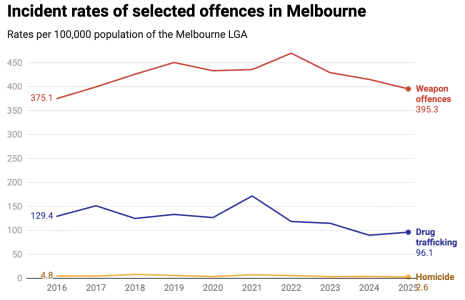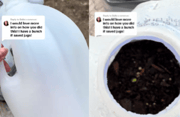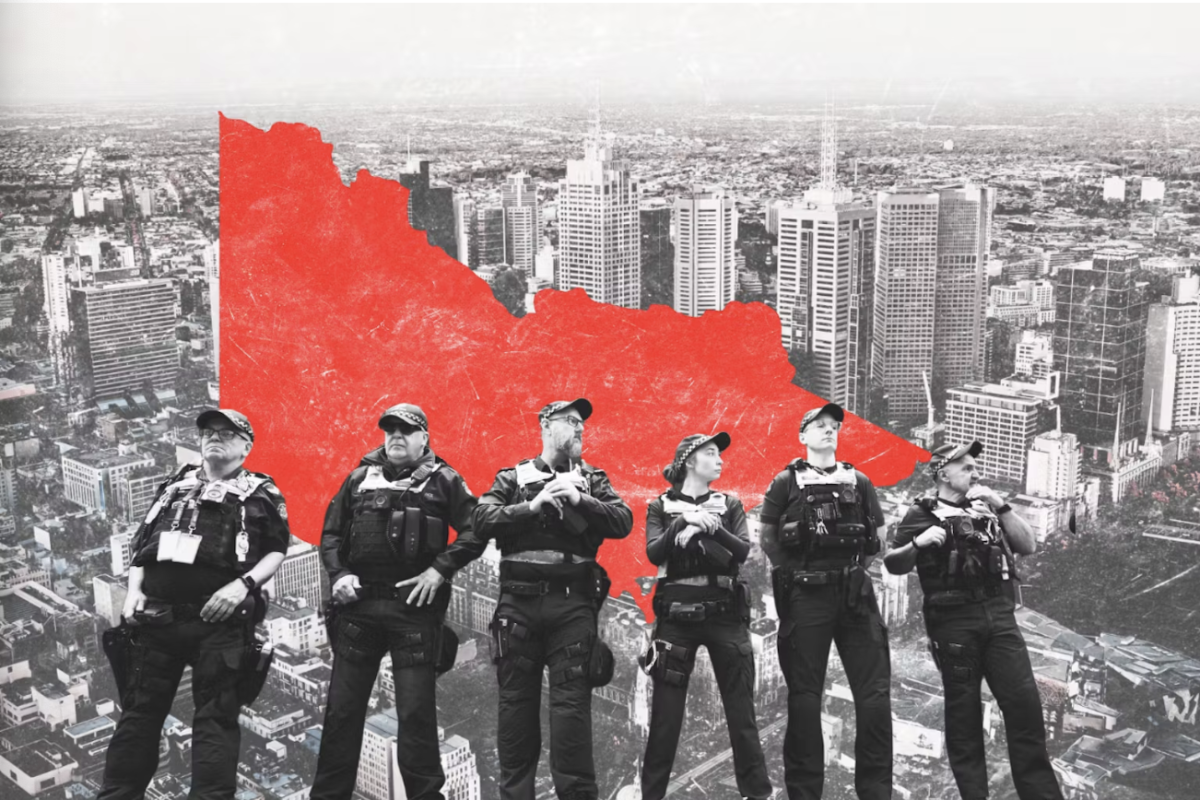
Melbourne has been in the news in recent weeks following a string of violent, high-profile crimes.
These incidents followed Victoria’s Crime Statistics Agency (CSA) releasing new data that reveal the highest levels of crime on record across the state.
In response, Federal Opposition Leader Sussan Ley declared Melbourne the “crime capital of Australia”.
Some media outlets have claimed there is a “terrifying crime wave” in Melbourne that is leaving residents and tourists running scared.
Youth gang violence appears to be particularly concerning.
Despite Premier Jacinta Allen announcing “the toughest bail laws in Australia” in March 2025, she is continuing to face scrutiny for being perceived as “soft on crime”.
But what do these new crime statistics actually reveal? Is Victoria, specifically Melbourne, in the midst of a crime epidemic?
A crime spike, with a twist
As part of the CSA’s quarterly and annual reports, it publishes a range of recorded incidents across five categories, such as “crimes against a person” and “drug offences”.
These are then broken down into further sub-categories. For example, under “crimes against a person”, there are sexual offences and robbery, among others.
Together, these data give a snapshot of reported crimes across the state by offence type, offender and location.
The headline figures from CSA are indeed concerning.
In the 12 months before June 30 this year, Victoria Police recorded an 18.3% rise in criminal incidents from the same period last year (483,583 compared to 408,930).
The CSA said this represented the highest recorded figures since reporting started in 2004-05, and a 22% jump in criminal incidents recorded since 2017.
Melbourne is the local government area with the highest rate of crime, with a 17.4% increase since last year.
However, when measuring crime on a per capita basis, Melbourne’s crime rate is actually lower today (18,097 per 100,000) compared to 2017 (18,334 per 100,000).
This begins to show some of the challenges when examining crime data.
Delving deeper into the stats
It is important to remember crime statistics only tell us about crimes that have been reported.
This may seem like an obvious point, but different crimes have very different reporting rates.
For example, in 2024, Prime Minister Anthony Albanese declared a “national crisis” of family and gender-based violence across Australia. However, it has been estimated that less than 24% of domestic abuse crime is actually reported to police.
This matters in the context of what we are seeing in Victoria and Melbourne because other crimes – for example homicide and property-related crimes – would have a reporting rate much closer to 100%: murder because it is not that easy to make a person disappear without others noticing, and property because in order to file an insurance claim, people first need a police report.
Of all the reported incidents in Victoria last year, 59% were property-related and 39% were theft. Property offences, in particular theft, are really driving this spike in reported crime.
However, this leads to a second point.
Namely that crime statistics do not tell us why crime is going up, or indeed down.
Looking at theft, we see a dip in reported incidents from 2020-2022, years impacted by COVID restrictions, and now a rise.
The uptick has certainly continued past pre-COVID levels, but this could also be associated with the cost-of-living crisis.
Underpinning this possible explanation, retail theft rose to 41,667 offences in 2025 – a 27.6% increase on the previous year.
This could paint a picture more of families struggling in the economic climate than a state struggling with violent crime. But it is the latter that is captured by political and media discourse.
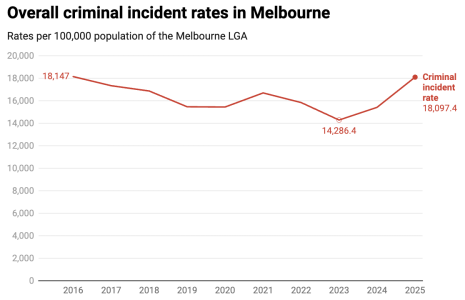
Some trends are positive
The increased politicisation of crime often leads to a perpetual state of urgency and the introduction of increasingly punitive measures, such as Victoria’s new bail laws.
However, a deeper dive into the data actually reveals plenty of positive messages.
CSA’s regional mapping tool shows:
- across Victoria, homicides are broadly stable or tracking down, with 3.2 per 100,000 last year, compared to a high of 3.7 in 2017
- in Melbourne, homicides are at a ten-year low, with just 2.6 per 100,000, compared to a high of 8 per 100,000 in 2018. This is echoed by a fall in the use of weapons, including knives and firearms, at both state level and in Melbourne.
The real success story in these data, and rarely reported on in the media, are drug offences.
Across Victoria, drug use and possession is down 16.2% since 2020, with drug dealing and trafficking at a ten-year low, down 46.7% since 2016.
There is a similar picture unfolding in Melbourne, with drug use and possession down 7.5% and drug dealing and trafficking down 20.6% since last year.
Yet we rarely hear this messaging in media and political rhetoric.
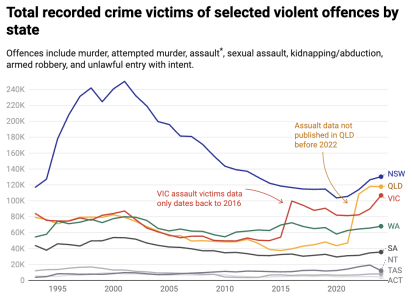
Victorian assault data from Crime Statistics Victoria
Chart: The ConversationSource: ABS, Recorded Crime - Victims
Something else to consider
Like all tools, the value of officially recorded crime rates depends on how they are used – and they can be put to many uses at once depending on the story people want to portray.
The CSA, like all crime reporting agencies, are hugely useful tools.
But they only really give us an overall snapshot of the administration of crime events, rather than a true picture of what is happening.
Overall, we can see an increase in certain recorded crimes, but the broader picture is much more nuanced.
Many of the increases in recorded crime are in line with national trends, indicating no real cause for local alarm. Meanwhile, significant recorded crimes, such as homicides and drug related offences, show drastic drops.
As always, it is important to look beyond the headlines and see what stories the data tell us.
This article is republished from The Conversation under a Creative Commons license. Read the original article.

